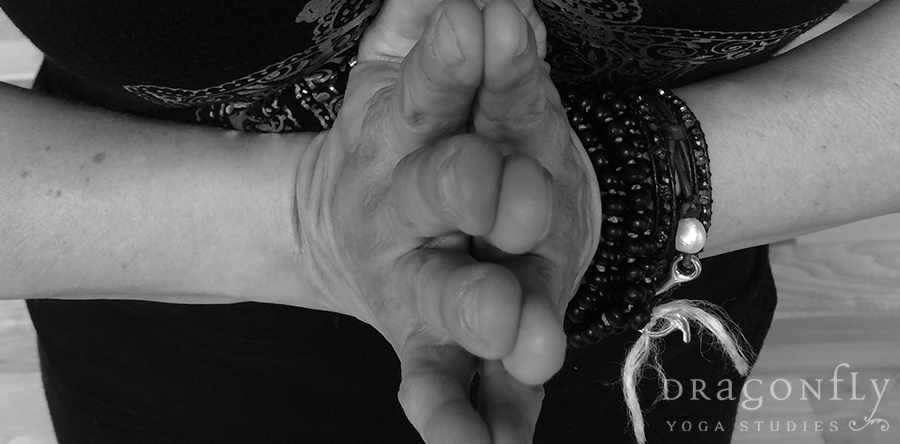Mantra Yoga Meditation by Laura Tyree of Dragonfly Yoga Studio Fort Walton Beach
This is a daily practice; morning and evening. To clear the mind creates an avenue for the emotional and mental bodies to come to equanimity. The use of sound as a healing agent has been used for millennia. Chanting mantra focuses the mind. The movement of sound waves coupled with the intention of the mind, hones the power of the mantra practice.
Any mantra will do. This mantra is centuries old and has proven itself in both ancient and modern times. It’s not mandatory to use this mantra, any repetitive words, or spiritual prayers will also do. You can design your own, to fit your specific spiritual needs.
~Laura
[title_box title=”Nam Myoho Renge Kyo”]
(Nah’m Mee yo’ho Wren’gay Keeyo’)
Below are excerpts from The Buddha In Your Mirror, a book of Nichiren Buddhism solely dedicated to this single, powerful mantra.
Page 39.
On April 23, 1253, Nichiren first declared Nam Myoho Renge Kyo to be the one true law, the great “secret” hidden in the depths of the Lotus Sutra. On the surface, he used Myoho-renge-kyo, the Japanese reading of the characters of the title of the Lotus Sutra, as translated by the linguist Kurmarajiva from Sankrit to Chinese, to express the idea of enlightenment, adding the word nam, meaning “devotion to.” From a deeper perspective, he made Shakyamuni’s enlightenment, expressed conceptually in the Lotus Sutra, accessible for the first time to all. This was an enormous advance in the history of Buddhism, not to mention the start of a revolution in the idea of religion itself.
The Buddhism of Nichiren does not require the renunciation or suppression of human desires. This was a fundamental change in outlook from other schools, which insist on the extinguishing of earthly desires to attain higher wisdom. Nichiren stated that the source of all desire is life itself; as long as life continues, we instinctively want to live, to cherish love, to seek profit, and so on. Since desire arises from the innermost core of life, it is virtually indestructible. Even the thirst for enlightenment is a kind of desire.
Civilization advanced because of the instinct and desires of men and women. The pursuit of wealth produced economic growth. The will to defy winter cold led to the development of natural science. Love, which is a basic human desire, inspired literature.
Not only can we fulfill our desires as we change ourselves from within, but also the desires themselves begin to change. They become purified or elevated. And the desires that we do have serve as fuel, propelling us toward our enlightenment. Practitioners chant the mantra morning and evening for their personal desires against the backdrop of the larger desires, for individual enlightenment and world peace. This process of inner human revolution – the transformation of desires – is inextricably entwined with the reformation of the surrounding environment. Buddhists work tirelessly to bring peace and harmony to their jobs, families and communities while they struggle tenaciously to manifest the law from within. No one needs to go to the mountaintop. But every day we climb. Morning and evening, Buddhists climb the mountain of enlightenment through Buddhist practice in their own homes.
Page 43.
The question immediately arises: How can chanting a phrase that you understand barely, if at all, have any effect, positive or negative, on your life? The analogy Buddhists often use is to compare Nam Myhoh Renge Kyo to milk. A baby is nourished by mother’s milk and later by cow’s milk long before the baby understands what milk means. The nutritional benefits are intrinsic to the milk.
To use another example, we do not need to know how an automobile works in order to use it to get somewhere. It makes sense to learn a bit about how a car works, and study is an important part of a well-rounded Buddhist practice. But it is important to realize that the chant works whether you understand it or not, whether you believe it works or not. In fact, many people begin chanting Nam Myoho Renge Kyo with the express intent of proving to friends that it doesn’t work – and invariably, they are surprised to find out that it does.
See for yourself. This may be a practice you find beneficial. Special thanks to Valerie Wenzel for the sharing of this mantra.
Namaste’
